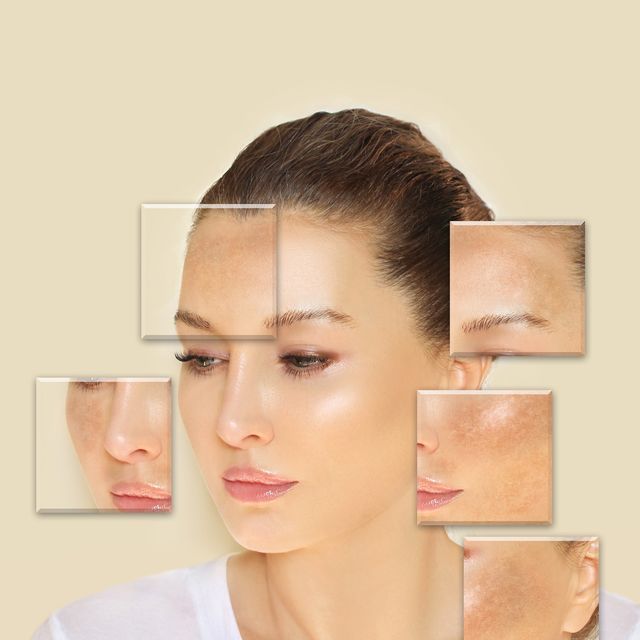
What Are Sun-Induced White Spots?
Sun-induced white spots are small, flat, pale patches that usually appear on sun-exposed areas like the face, arms, and legs. They are typically harmless, non-itchy, and don’t spread across the body.
These white patches occur when prolonged UV exposure affects the skin’s pigmentation process. UV rays can damage melanocytes—the cells responsible for producing melanin—in specific areas, leading to localized depigmentation.
So, if you notice white spots after tanning or extended sun exposure, you’re seeing the effect of cumulative sun damage at the superficial pigment level.
Are White Spots Harmful?
The good news: white sun spots are mostly cosmetic. According to Dr. Ridhima Arora, MD, dermatology, Radix Healthcare:
“They are a harmless sign of long-term sun exposure, not a disease. They don’t increase cancer risk or cause other skin problems.”
However, certain groups—like farmers, outdoor workers, or frequent beachgoers—may be more prone due to higher sun exposure. Age also plays a role: these spots are more common after 40, when cumulative sun exposure has had decades to affect the skin.
Other Causes of White Spots
Not all white patches are caused by the sun. Dr. Gulrez Tyebkhan, consultant dermatologist at Saifee Hospital, explains that white spots can also be related to:
- Idiopathic Guttate Hypomelanosis (IGH)
- Vitiligo
- Atopic dermatitis or allergies
- Fungal infections
While nutritional deficiencies (like calcium or Vitamin B12) are rarely a direct cause, they can sometimes appear with other symptoms. Tropical climates, higher sweating, and rising allergic conditions make some types of white spots more common in Indian skin.
Prevention of Sun-Induced White Spots
Preventing white spots is largely about protecting your skin from UV damage. Experts recommend:
- Sunscreen: Use broad-spectrum SPF 30+ daily on exposed areas, even on cloudy days.
- Protective clothing: Wear full-sleeved, breathable fabrics to reduce direct sun exposure.
- Seek shade: Avoid the sun between 10 am and 4 pm when UV rays are strongest.
- Antioxidant skincare: Topical Vitamin C, E, or niacinamide can strengthen skin resilience.
- Balanced diet: Foods rich in antioxidants, like berries, leafy greens, and nuts, support healthy skin from within.
⚠️ Avoid home remedies like lemon, turmeric, or oils on sun spots—they can irritate the skin and don’t reverse pigment loss.
Bottom Line
White spots after sun exposure are mostly harmless, but they indicate sun damage, which accumulates over time. Proper sun protection, a healthy lifestyle, and timely dermatological consultation can prevent new spots and maintain healthy skin.



